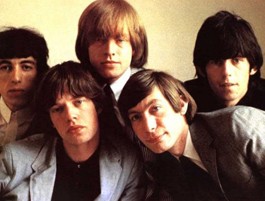When the sun went down, our radios came on. Faintly through the twilight, then with increasing clarity as the darkness intensified, the clarion 50,000-watt signal of KOMA reached across the midwestern plains, a beacon of aural gratification for a town full of teens hungering to hear the hits.
Although our backwater enclave was hundreds of miles away from the station’s studios in Oklahoma City, we knew we were dialed in to what was happening musically. This was the mid-1960s, the era when Top 40 radio ruled the airwaves, and “playing the hits” was radio’s raison d’être from coast to coast. For a generation—the one I share with Pete Townshend—that artistically agnostic weekly tally of the records that got played, requested, sold, memorized, imprinted on a generation, was the embodiment of the democratic ideals that seemed so irrelevant in civics class.
For these were our songs, the favorites (and all the rest) that served as something important and meaningful that could help maintain and reinforce the connections that we in our class and our school and our town and our county shared with our counterparts in all the other classes and schools and towns and counties and even states across the country.
This wasn’t really anything new. Music publishers began tracking the sales of sheet music a century earlier, making Stephen Foster a temporary superstar long before the term was coined. And the nationwide radio broadcasts of The Lone Ranger and Amos ‘n’ Andy and The Shadow and Jack Benny and dozens more fulfilled a similar function until television added pictures and swept them into the new medium.
As music returned to fill the void, regional stations began to share ideas—promotions, business innovations and on-air talent, too. And when the earliest innovators figured out that they could play the same songs that were sounding from local juke boxes—over and over and over—what soon became Top 40 radio was, in short order, a nationwide presence.
Reinforced by weekly charts in the trinity of trade magazines—Cashbox, Record World and Billboard—Top 40 radio was musically ecumenical, ready to play almost anything that would generate a flurry of calls to the request line. Thus we had such incongruous juxtapositions as Elvis Presley and Perry Como jostling for position at the top of the charts in the spring of 1956; Louis Armstrong (“Hello Dolly”) bumping up against the Beatles (“Can’t Buy Me Love”) in early 1964; or Sept. 20, 1969, when the Rolling Stones’ glorious “Honky Tonk Women” had its four-week run as the nation’s No. 1 song ended by, of all perverse possibilities, “Sugar, Sugar.”
Yet this same stylistic color-blindness also allowed all kinds of strange and wondrous exotica to slip onto the national playlists, giving naive teens tastes of ska (Desmond Dekker’s “Israelites”), African pop (Miriam Makeba’s “Pata Pata”), bossa nova (Getz/Gilberto’s “The Girl from Ipanema”), skiffle (Lonnie Donnegan), pure gospel (“Oh Happy Day”) and such jazz artists as Cannonball Adderly, Dave Brubeck, Hugh Masekela, Ramsey Lewis and Mongo Santamaria.
It also left room for an endless stream of comic “novelty” records, creating careers for Stan Freberg, Alan Sherman, Ray Stevens and “Weird Al” Yankovic.
Top 40 radio was the wave that carried California surf music around the world, and gave certain cities a clear musical identity, such as New Orleans, Detroit, Memphis or later, San Francisco. It lifted local acts to (often fleeting) national prominence from such unlikely cities as Minneapolis (the Castaways, “Liar, Liar”), Seattle (the Ventures), Pittsburg (Tommy James & the Shondells) or rural Louisiana (Tony Joe White).
As FM emerged as the medium of choice for deeper musical explorations, Top 40 radio became even more eclectic, embracing the cream of serious rock (the Beatles, the Stones, etc.) scrambled with the likes of Tony Orlando, Cher, Helen Reddy, Bread, the Carpenters and other middle-of-the-road acts whose painfully unhip hits never darkened the turntables of the “underground” stations.
Whether or not they acknowledge it, many practitioners of that “freeform” approach to FM programming surely had their ears opened, at least to some degree, by the anything-goes ethic of their Top 40 antecedents. But given the timid playlists and corporate conservatism that dominate broadcast radio today, and the vast array of narrow niche formats that has blossomed on satellite and Internet radio, it’s a wonder how a new generation can find, share and learn from a world of music. For us, it was once encapsulated in an ever-shifting list of 40 favorite songs.











